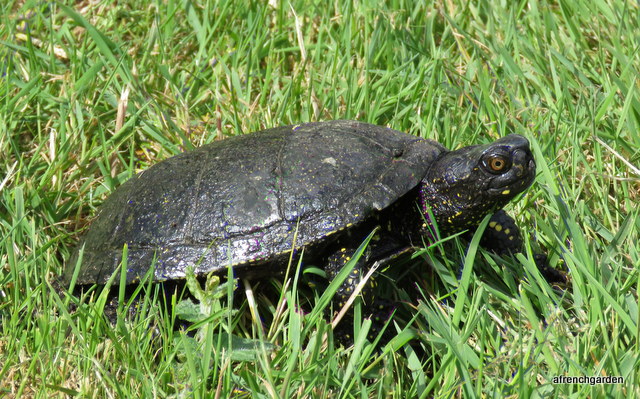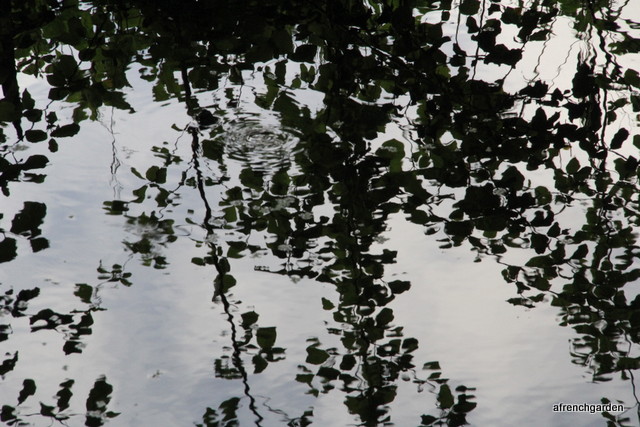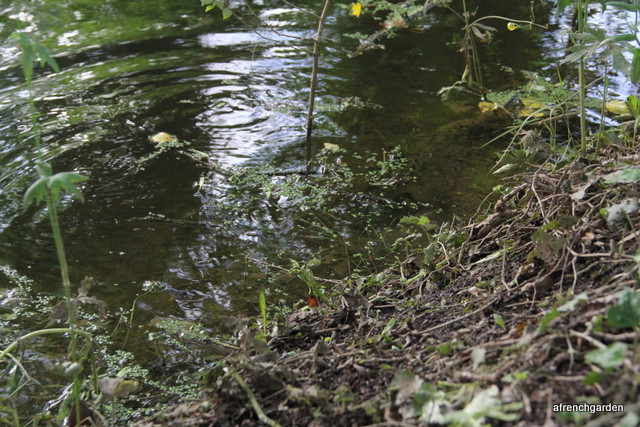The garden in May is beautiful.

The old favourites are back.
Madame Isaac Pereire is flowering and welcoming the bumble bees.
I see more and more male spring bumble bees so I know that their season must be finishing.
But this May was special as my husband had decided at the end of last year that he wanted to keep honey bees. Over the winter preparations began. We were enrolled in the bee-keeping federation of the Charente Maritime and their classes for beginner bee-keepers to start in April. In the winter two hives were bought and painted and decorated by me (at least they could look good in the garden!).
Then came the bad news in the spring that the bee population had been decimated over the winter. Long-time bee-keepers had never experienced anything like this. So many hives were opened in spring to find dead bees and unconsumed honey supplies. The winter had not been severe or overly long. With no natural causes apparent the bee-keepers suspected pesticides. Was it a good thing to start keeping bees in an agricultural area growing rape and sunflower?
Our friend Michel lost 27 of his 30 hives but has set out to continue and build up, so my husband, encouraged by Michel, decided to continue but was unable to source any bees in April – more experienced bee-keepers had booked up available bees from companies before him.
In April, under Michel’s advice, a ruchette or small hive was placed with its entrance facing the south on top of an outbuilding. Michel had provided a lure of old comb and the inside was rubbed with “Charme d’abeilles”. I remained sceptical about their efforts although the ruchette was being visited by bees.
On the ninth of May I was weeding in the back garden and an amazing noise of buzzing bees alerted me to the incoming swarm.
I rushed inside and grabbed my camera. At 4.37 p.m. the sky over the outbuilding was full of bees and they looked as if they were heading to the ruchette.
The ruchette has only a small entrance hole and the bees appeared to be entering still at eight o’clock in the evening.
Not quite believing his new status as a beekeeper my husband went happily to bed to rise before sunrise and bee flying time to block their exit and transfer them to their new situation at the bottom of the garden.
Michel provided an almost compatible feeder and advised on feeding them a 50:50 sugar solution to settle them into their new home. Moss had to be added to the water feeder to help them access the water safely.
Bee watching has taken up a lot of my husband’s time as he checks that they are still there and watches mesmerised as they fly in and out. Such excitement when one returns with pollen on her legs!
Then a week later I notice scout bees patrolling our house roof as they have frequently done in previous years (see Uninvited Guests). The now experienced swarm catcher leaps into action and a second polystyrene ruchette, similarly lured is placed on top of our dining room roof and accessed from the front garden. The considerable interest in our tiled roof is transferred to the ruchette but the weather clouds over and no swarm results. However, the bees have not renounced their interest before we had to leave on holiday to join my daughter and family.
Michel has promised to look after the bees while we are away. What shall we find when we return? I think May can be a difficult time for gardeners and bee-keepers to leave home.
















